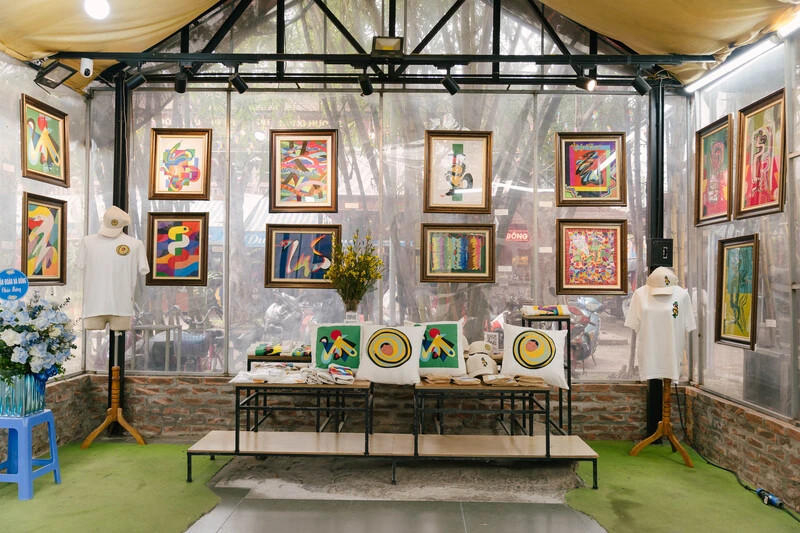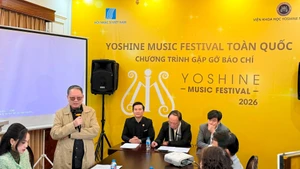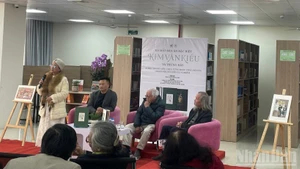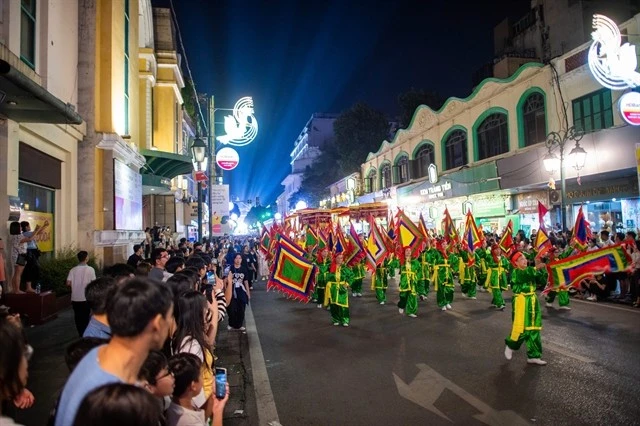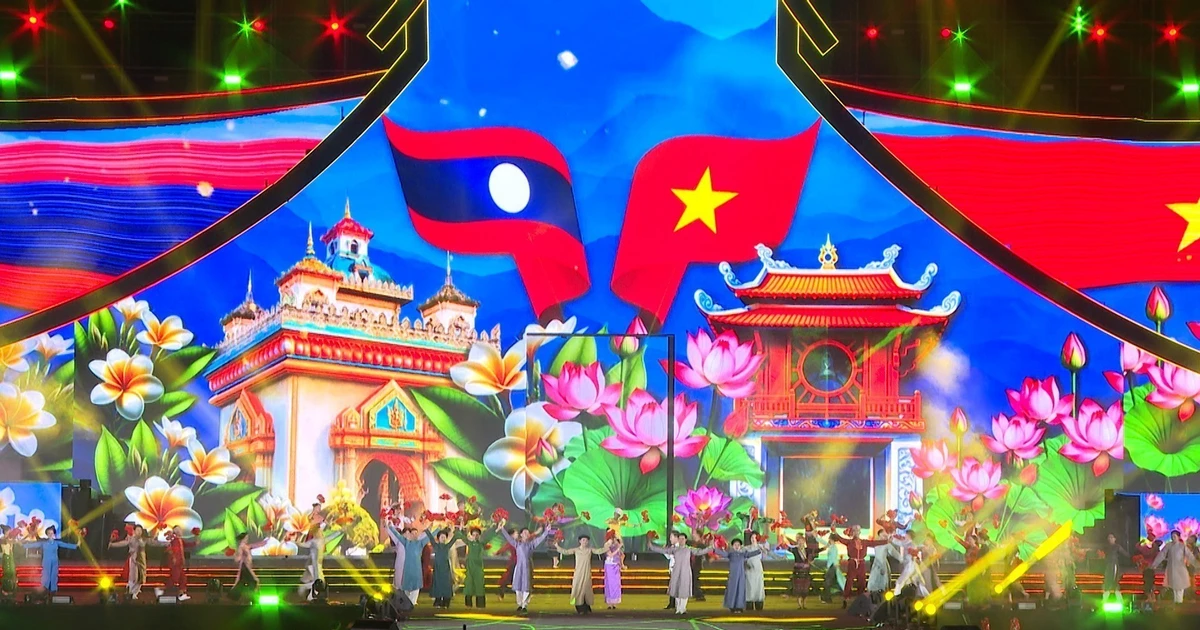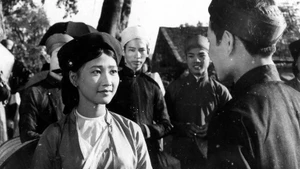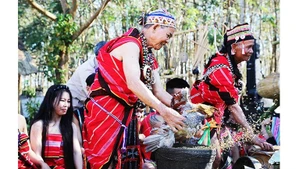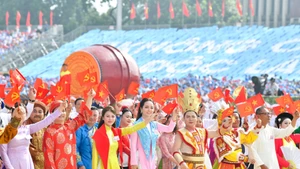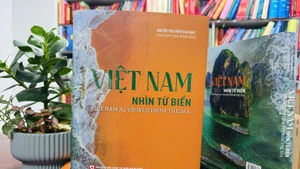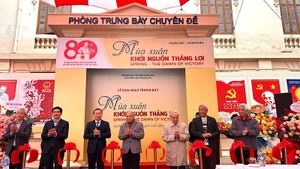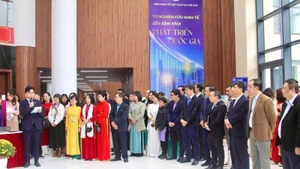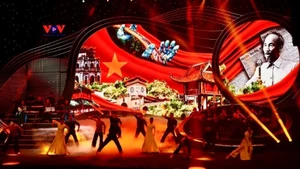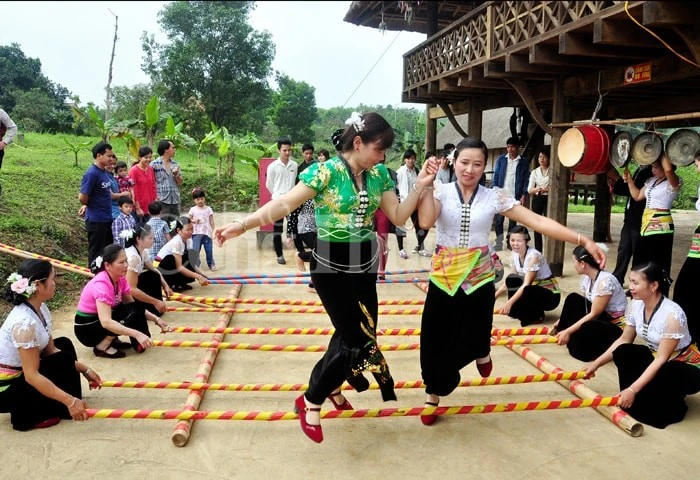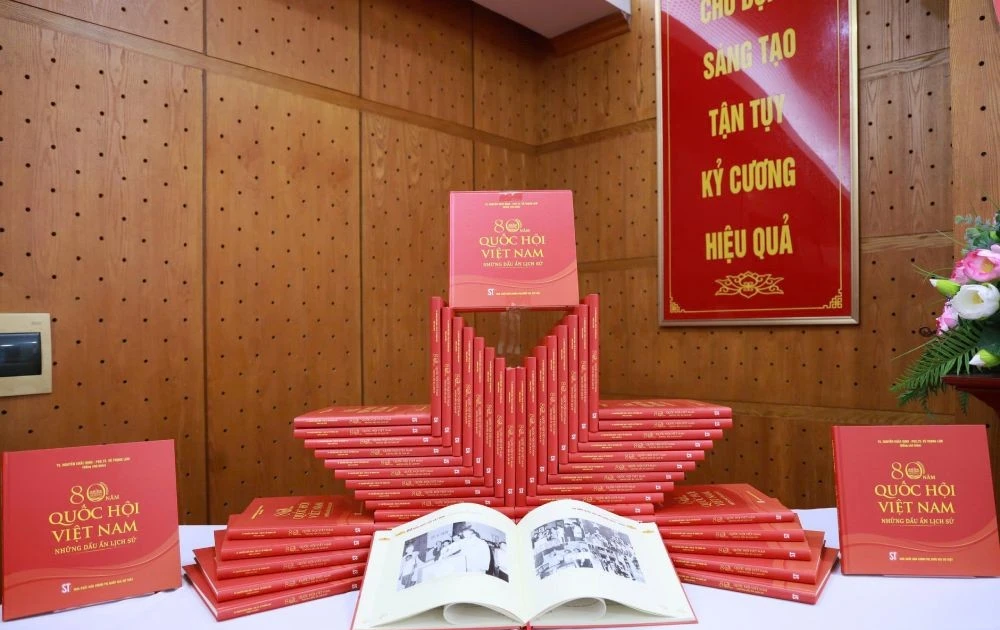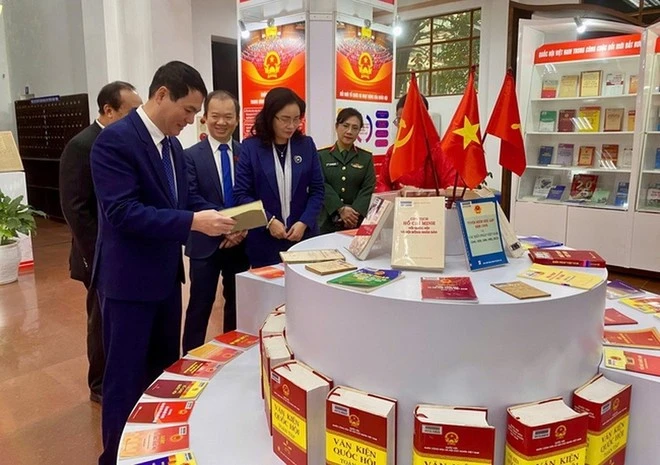Art breaking down barriers
In mid-March, we visited Van Phuc Silk Village in Ha Dong, Ha Noi, and were immersed in the vibrant colours of the exhibition “Sharing pieces of hope”. Admiring the delicate silk collage paintings alongside strikingly original applied artworks, such as traditional long dress (Ao Dai), T-shirts, handbags, and pillow covers, it was hard to believe that they had been created by artisans with disabilities. Even more surprising was how these craftsmen had breathed new life into discarded silk scraps, imbuing them with renewed vitality and purpose through skilful creativity.
Beyond simply offering an artistic space, the exhibition conveyed powerful stories of resilience and belief, allowing each visitor to deeply feel the immense creative energy and determination of its creators with disabilities.
“Sharing pieces of hope” continues a series of initiatives by Vun Art — a social enterprise founded in 2017 with the mission of building a sustainable artistic working environment for people with disabilities.
Previously, Vun Art launched the campaign “Portraits from Silk Scraps” with the aim to improve working conditions for people with disabilities, and has also regularly organised hands-on collage workshops, demonstrating the power of art in connecting communities and fostering social integration.
By crafting practical, aesthetically rich products that are well received by the market, people with disabilities at Vun Art have proven that they can create positive contributions to life when they are given the opportunity and belief, like Vun Art revives discarded silk.
Sharing a similar aim of boosting confidence and promoting social integration for people with disabilities, the free dance class Solar Dance Club, founded by coach To Van Hoa and dedicated to the blind, stands out as another inspiring initiative.
With over 20 years’ experience in dance, To Van Hoa has developed a unique teaching method. Rather than relying on traditional lesson plans, he focuses on verbal instructions and feeling, allowing his students to develop movements naturally.
Hoa shared that learning sport dance is already challenging for normal people, so for the blind, the difficulty is multiplied. However, if they can overcome their fears and initial anxieties to master each step, sport dance can become a wonderful way to affirm themselves, connect with the community, and contribute in many roles, ultimately brightening their lives. This belief has motivated To Van Hoa to sustain the class for the past six years.
Many students who were once hesitant and lacking in confidence have now become “warriors” on major competition stages. A prime example is Le Tuan Ha, a congenitally blind student who has been part of the class for five years. Through his training, Ha has gained not only health and flexibility but also improved his communication skills.
Overcoming obstacles in spatial and orientation awareness, and dance posture, Ha and several club members have participated in and won prizes at contests such as “Dancing Beyond Boundaries” and the cup of dance clubs for the blind.
When humanistic values are shared, they naturally ripple outward, touching hearts of many people. From humble beginnings as a small class at the Association of the Blind in Dong Da District, Ha Noi, Solar Dance Club has, with the help of many dedicated coaches, expanded to many locations in the capital, Ho Chi Minh City, and the provinces of Cao Bang, Bac Giang, and Thai Binh. This expansion has opened greater opportunities for the blind to engage in sport dance and confidently integrate into the community.
Promoting sharing and connection
People with disabilities often face invisible barriers to communication and social integration, which can lead to feelings of inadequacy and withdrawal. Through art, a language that requires no translation, they are free to express their talents, emotions, and thoughts. This is why recent years have seen a rise in initiatives using art as a tool to access the world of people with disabilities.
In addition to Vun Art and Solar Dance Club, other projects include: Beyond Barriers — a special painting exhibition featuring works by disabled children from special education schools across the country, carrying the message “Physical disabilities do not mean lack of talents”; and “Hearing with the eyes” — a long-running project combining painting, film, music, and theatre to connect deaf and hearing communities.
Most recently, the “Unlimited” art performance programme, jointly organised by the Ha Noi Association of People with Disabilities and The International Centre on the occasion of Viet Nam Day of People with Disabilities (April 18), added to this momentum.
Not every person with a disability has the aptitude to become a professional artist, but art, with its healing and connective power, should be recognised as an essential element in the journey toward a more humane society.
As the chairman of Le Bros — an organisation that has supported and co-organised several art projects for people with disabilities — communication expert Le Quoc Vinh stated that art has long been regarded as a universal language that transcends linguistic, cultural, and physical boundaries. For people with disabilities, art plays multiple roles, from encouraging self-expression to providing opportunities for social connection.
Moreover, art serves as a form of therapy, helping individuals with disabilities improve their mental health and develop social skills. Works of art created by people with disabilities can also inspire others and shift public perceptions of abilities and values of people with disabilities, thereby reducing stigma and promoting inclusion.
Drawing from his experience working with people with autism, the deaf, intellectual disabilities, and limited mobility, Le Viet Cuong, Chairman of the Association of Persons with Disabilities of Ha Dong District and Director of Vun Art, affirmed the importance of creating artistic spaces for this community.
However, for such spaces to be truly effective and meaningful, they must encourage participants to open up and feel ready to engage. Equally vital is the involvement of artists, social organisations, and the broader community in developing creative, valuable, and sustainable models.
According to Le Quoc Vinh, a key priority is investing in accessible infrastructure, such as art classrooms designed to accommodate wheelchair users or equipment for the blind. Funding for training and events is also essential.
Specialised training programmes co-delivered by art professionals and therapists should be held regularly, particularly in remote areas. Regular events such as exhibitions and concerts would give people with disabilities a platform to showcase their talents.
The public also needs to be educated through awareness campaigns to help reduce prejudice. Encouraging volunteers to take part in support activities for people with disabilities will build a strong support network and foster inclusion.
From a media perspective, Vinh emphasised that people with disabilities are sensitive individuals who do not wish to be pitied or stigmatised, so the use of respectful and appropriate language is crucial. Disability advocacy groups have developed specific language guidelines for different communities and contexts.
He also stressed that media coverage of these projects should highlight talent and achievements, rather than dwelling excessively on personal hardship, which could unintentionally frame people with disabilities as objects of pity.
In addition, media content is essential, such as subtitles for the deaf and hard of hearing, audio descriptions for the blind, and plain language for those with intellectual disabilities.
Most importantly, media campaigns should avoid exploiting personal stories for emotional impact. Instead, they should focus on the creative journey and artistic contributions. Campaigns should also seek input from people with disabilities from the outset, ensuring messages are appropriate, while fostering trust and sustaining engagement. This will help create more opportunities for dialogue with the community, so that individuals with disabilities are heard, understood, and valued.
